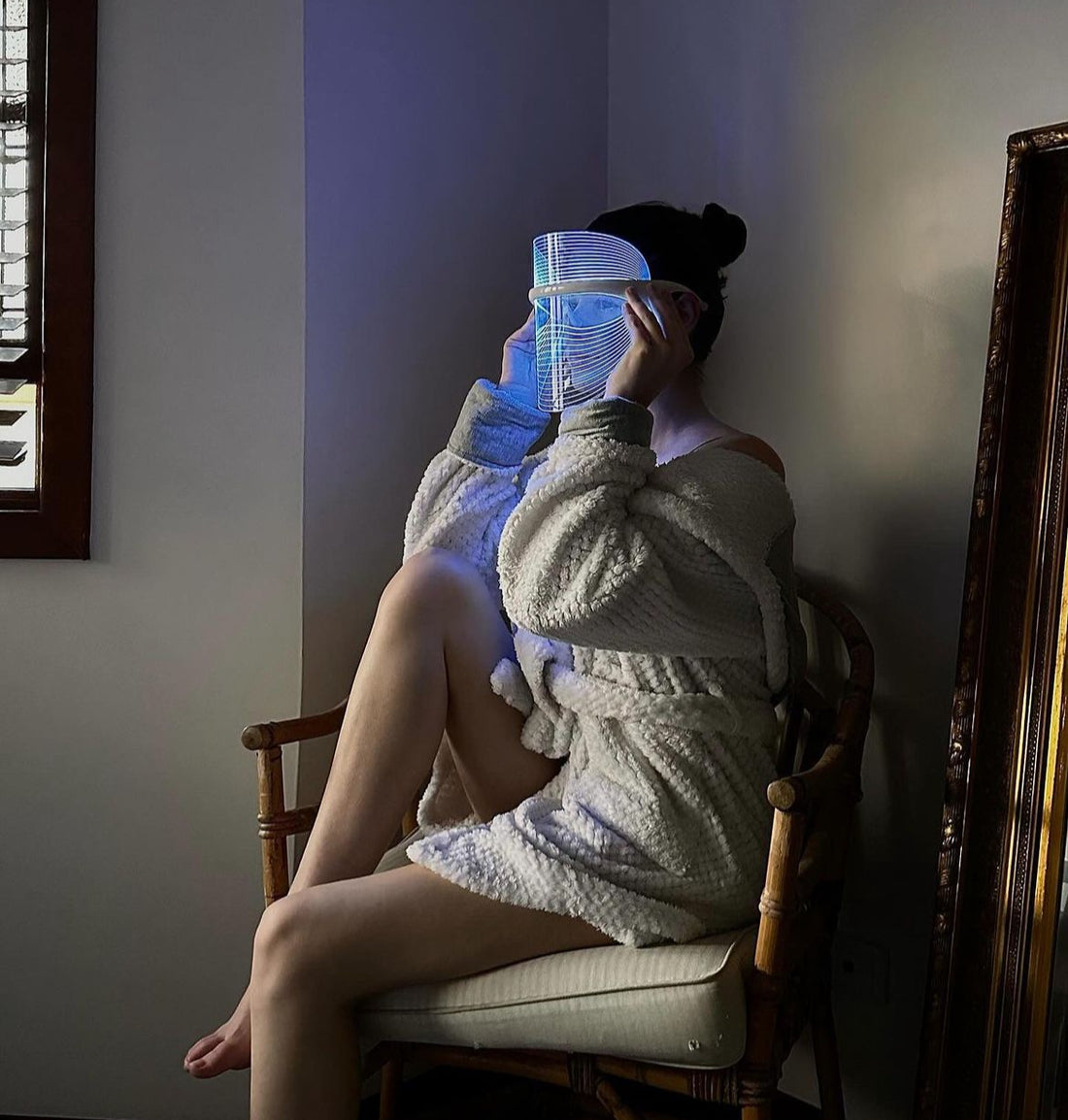In recent years, blue light therapy has gained significant attention for its potential health benefits, especially in skincare and mental health treatments. This non-invasive therapy uses a specific wavelength of blue light to treat a variety of conditions, from acne to depression. In this blog post, we’ll dive into the science behind blue light therapy, its key benefits, and how it can improve your well-being.
What Is Blue Light Therapy?
Blue light therapy involves exposing the skin or eyes to light within a specific wavelength range, typically between 400 and 490 nanometers. This range of light has unique properties that can penetrate the skin and affect cells in various ways.

Key Benefits of Blue Light Therapy
1. Treatment of Acne
One of the most well-known applications of blue light therapy is in the treatment of acne. Blue light is effective at killing Propionibacterium acnes (P. acnes), the bacteria responsible for many types of acne. When exposed to blue light, these bacteria absorb the light and are destroyed, reducing inflammation and breakouts.
Benefits include:
- Non-invasive: Unlike topical treatments or oral medications, blue light therapy doesn’t require harsh chemicals or invasive procedures.
- Fewer side effects: It’s often better tolerated, with fewer side effects like dryness or redness compared to traditional acne medications.
- Convenient: Many at-home devices are now available, making it easy to integrate into your skincare routine.
2. Improving Seasonal Affective Disorder (SAD) and Depression
Blue light therapy is not only beneficial for skin health but also for mental well-being. It is commonly used to treat seasonal affective disorder (SAD), a type of depression that typically occurs in the winter months due to reduced sunlight exposure. Studies suggest that exposure to bright blue light can help regulate the body’s internal clock, improve mood, and alleviate symptoms of SAD.
Benefits include:
- Mood improvement: Regular sessions can enhance overall mood and reduce feelings of lethargy and sadness.
- Sleep regulation: Blue light therapy can help restore circadian rhythms, improving sleep patterns and energy levels.
- Natural treatment: It's a drug-free alternative to traditional antidepressants.
3. Reducing Hyperpigmentation and Sun Damage
Blue light therapy is also effective in reducing hyperpigmentation and sun damage. By targeting the upper layers of the skin, blue light helps minimize discoloration and improve skin tone over time. In some cases, it can even reduce the appearance of fine lines and wrinkles by promoting collagen production.
Benefits include:
- Enhanced skin texture: Over time, your skin may become smoother and more even.
- Minimally invasive: Unlike chemical peels or laser treatments, blue light therapy requires no downtime.
- Long-term results: Regular sessions can result in long-lasting improvements.
4. Wound Healing and Inflammation Reduction
Research suggests that blue light therapy may also play a role in wound healing and reducing inflammation. It has been shown to boost the body’s natural healing processes by increasing circulation and stimulating the production of collagen and elastin, proteins crucial for skin repair.
Benefits include:
- Speeds up recovery: Blue light therapy can accelerate the healing process for minor cuts, burns, and wounds.
- Reduces inflammation: The therapy can help calm irritated or inflamed skin, making it beneficial for conditions like psoriasis or eczema.
5. Oral Health and Gum Disease Treatment
Recently, blue light therapy has been explored for its potential benefits in oral health, particularly in treating gum disease. Some dental practices use blue light in combination with photosensitizing agents to eliminate harmful bacteria in the mouth and reduce plaque buildup.
Benefits include:
- Non-invasive dental care: It provides a painless option for managing gum disease.
- Improved oral hygiene: Regular use may help prevent infections and improve overall oral health.
How Safe Is Blue Light Therapy?
Generally, blue light therapy is considered safe when used properly. However, it's important to follow the guidelines provided by healthcare professionals or device manufacturers to avoid overexposure, which can cause skin irritation or, in rare cases, eye strain. It's always advisable to wear protective goggles during treatments, particularly for facial sessions.

Who Can Benefit From Blue Light Therapy?
- Teens and adults with acne-prone skin
- Individuals suffering from seasonal affective disorder or mild depression
- Anyone looking to improve skin tone and texture
- Patients recovering from minor wounds or dealing with chronic skin inflammation
- People interested in non-invasive cosmetic treatments
What devices are available?
At TRLL, we have multiple devices that offer blue light. Explore our range that includes face masks, handheld and professional devices: https://www.theredlightlab.com/collections/blue-light-therapy-devices/
Conclusion
Blue light therapy offers a versatile, non-invasive solution for a range of health concerns, from acne and hyperpigmentation to mood disorders like SAD. Its accessibility and effectiveness make it an attractive option for many people seeking a natural alternative to medications or invasive treatments.
As research continues to uncover new applications for blue light therapy, it’s likely that this technology will only become more popular in the realms of dermatology, mental health, and beyond.

